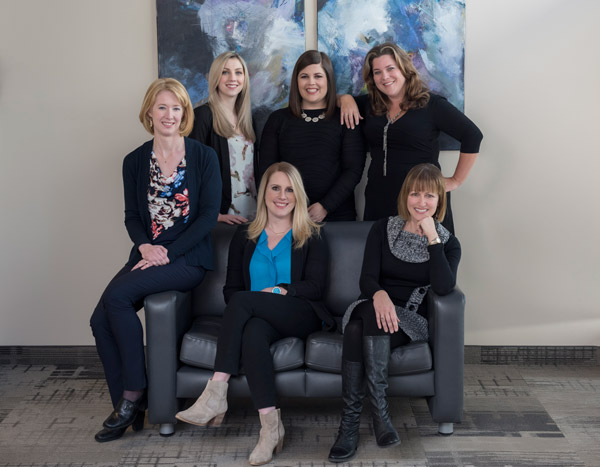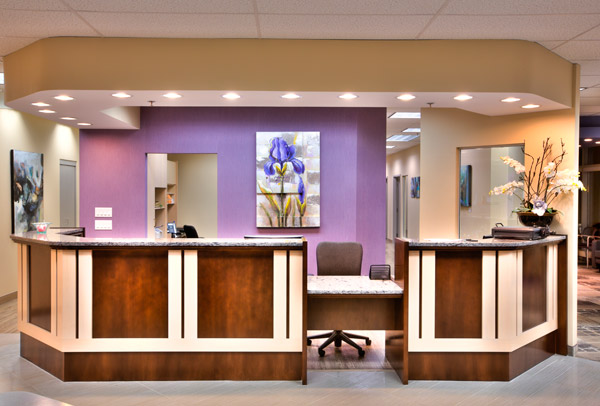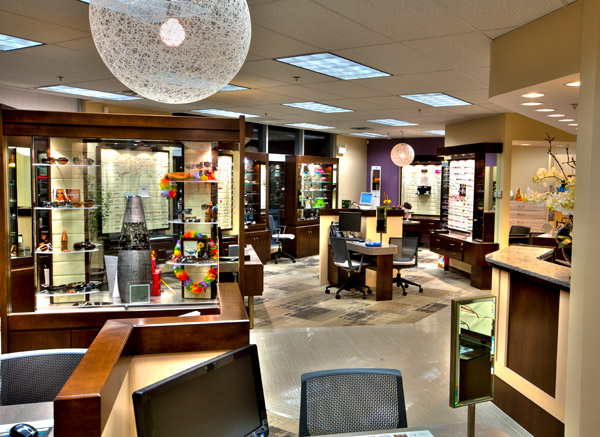The four ODs who lead Bedford Eye Care have an unusual business partnership. That’s because it’s not a partnership at all, not really. It just looks like one. “We’re four businesses under one roof,” says Toby Mandelman, OD, one of the four partners with the practice, which is in Bedford, Nova Scotia. It’s a practice she started on her own in 1987, but as it grew, each new owner saw the benefits of this business model.


What this arrangement allows is flexibility for each of the ODs in balancing work and home. “None of the owners work with patients more than three days a week,” she says. “This is a big lifestyle practice.” The lighter patient workload makes a big difference. “We don’t want any of us being so exhausted that we hate coming to work.”
Making this arrangement work takes planning and discussion—the ODs hold management meetings once a month. They also share the administrative responsibilities of running the practice.
The other partners are Avila Cox, OD; Erin Sheppard, OD; and Erin McLeod, OD. They, along with Dr. Mandelman, are graduates of the University of Waterloo School of Optometry and Vision Science. There are also two associate ODs who have joined the practice—Amanda Boudreau, OD, and Susan Matthews, OD.


The hope is that the newest ODs will eventually buy in and become owners themselves, Dr. Mandelman says. That has been the pattern in the past. “Each time I had a new associate who bought in, we’d start shifting new patients” to the new OD, she says.
In addition, all of the staff is female, too. Many of the women are mothers, and there’s an understanding that children and their demands are a part of life. “When we schedule meetings, we bring the kids. You’ll often see kids at our management meetings; they’re watching videos or playing together.”
The practice is also unique in the specialty care it provides. It was the first to offer corneal refractive therapy in the eastern provinces of Canada, and it also has a dry eye clinic and has started a traumatic brain injury (TBI) program, she says. It’s an interest that Dr. Mandelman picked up only recently, but she’s become a passionate advocate for these services. Dr. Mandelman is part of an integrative group of naturopaths, occupational therapists, physiotherapists and more. “We don’t have a clinic, but we work together as a group. Last year, I saw about 100 TBI patients, many of them concussion cases. Most people I see have had workplace accidents and motor vehicle accidents. The initial visit with one of these patients lasts a couple of hours, and then these patients undergo therapy in their own communities. These services are often covered by private insurance if a motor vehicle or workplace accident is involved.”
They’re also thrilled to have someone who understands the symptoms, as many of these patients have been accused of malingering by other health care providers. “When we can provide these patients with a pair of prism glasses and they can return to work, that’s amazing,” she says. To ensure that the practice will continue to provide services to brain injury patients when the time comes for Dr. Mandelman to retire, she is working with one of her partners. “When I want to phase out, it’s my hope that she can take up the slack with confidence.”
Dr. Mandelman says that seeing the results of a neuro-optometric reset is one of the most dramatic experiences a doctor can have. She remembers one of her first patients who had such terrible photophobia, could hardly speak and struggled to walk even with two canes. “I had about four appointments with him where all the lights were out; it was just too painful for him to even look at me. When he tried to walk, he fell to the left. I realized it looked exactly like a midline shift case I heard described in a lecture,” she recalls. She created a pair of prism lenses for him and when he came to pick them up, a remarkable transformation occurred. “He took a few tentative steps and then he walked back to us, upright and steady. In a full, clear sentence, he asked, ‘Why are you all crying?’ The ‘normal’ guy inside of him just came out,” she recalls. Three months later, he drove himself to his visit to order new glasses. “His face looked so different; he was joking and talking clearly.”





